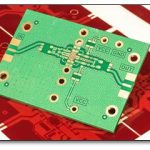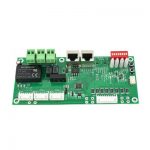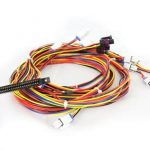Introduction to PCB Solderability
Printed Circuit Board (PCB) solderability is a critical factor in ensuring the reliability and functionality of electronic devices. Solderability refers to the ability of a surface to be wetted by molten solder and form a strong mechanical and electrical bond. In the manufacturing process of PCBs, solderability testing is essential to guarantee the quality of the final product and prevent potential failures during assembly or operation.
In this comprehensive guide, we will delve into the various aspects of PCB solderability testing, including the importance of solderability, factors affecting solderability, common testing methods, and best practices for achieving optimal results. By understanding and implementing proper solderability testing techniques, manufacturers can improve the overall quality and reliability of their PCBs.
The Importance of PCB Solderability Testing
Ensuring Reliable Connections
One of the primary reasons for conducting PCB solderability testing is to ensure reliable connections between components and the PCB. A good solder joint provides both mechanical strength and electrical conductivity, allowing for proper signal transmission and power distribution. Poor solderability can lead to weak or inconsistent connections, resulting in intermittent failures or complete device malfunction.
Preventing Manufacturing Defects
Solderability testing helps identify potential manufacturing defects early in the production process. By detecting issues such as poor wetting, excessive oxidation, or contamination, manufacturers can take corrective actions before the PCBs are assembled into final products. This proactive approach reduces the risk of costly rework, delays, and customer returns.
Meeting Industry Standards
Many industries have established solderability testing standards to ensure the quality and reliability of electronic products. For example, the IPC (Association Connecting Electronics Industries) has developed the IPC-J-STD-003 standard, which specifies the requirements for solderability testing of printed boards, components, and wires. Adhering to these standards demonstrates a commitment to quality and helps manufacturers meet customer expectations.
Factors Affecting PCB Solderability
Surface Finish
The surface finish of a PCB plays a crucial role in its solderability. Common surface finishes include Hot Air Solder Leveling (HASL), Electroless Nickel Immersion Gold (ENIG), Organic Solderability Preservative (OSP), and Immersion Silver. Each finish has its own characteristics and affects solderability differently. For instance, ENIG provides excellent solderability and shelf life, while OSP offers good solderability but has a limited shelf life.
Storage Conditions
Proper storage conditions are essential for maintaining the solderability of PCBs over time. Factors such as temperature, humidity, and exposure to air can impact the solderability of the surface finish. High humidity can lead to oxidation and corrosion, while exposure to air can cause the formation of oxide layers that hinder solder wetting. It is recommended to store PCBs in a controlled environment with low humidity and minimal temperature fluctuations.
Contamination
Contamination on the PCB surface can significantly degrade solderability. Common contaminants include flux residues, oils, dirt, and dust particles. These contaminants can prevent the solder from properly wetting the surface, resulting in poor or inconsistent solder joints. Proper cleaning and handling procedures should be implemented to minimize contamination during the manufacturing process.
Thermal History
The thermal history of a PCB can also affect its solderability. Exposure to high temperatures during manufacturing processes like reflow soldering or rework can cause the surface finish to degrade or oxidize, reducing its ability to wet with solder. Additionally, multiple thermal cycles can lead to intermetallic compound (IMC) growth, which can embrittle the solder joint and compromise its reliability.

Common PCB Solderability Testing Methods
Wetting Balance Test
The wetting balance test is a quantitative method for evaluating the solderability of PCBs and components. In this test, a sample is immersed in molten solder, and the wetting force is measured as a function of time. The wetting force curve provides information about the wetting speed, wetting time, and maximum wetting force, which are indicative of the solderability of the surface.
| Parameter | Description |
|---|---|
| Wetting Speed | The rate at which the solder wets the surface |
| Wetting Time | The time required for the solder to completely wet the surface |
| Maximum Wetting Force | The maximum force exerted by the solder on the surface during wetting |
Dip and Look Test
The dip and look test is a qualitative method for assessing the solderability of PCBs and components. In this test, a sample is dipped into molten solder for a specified time and then withdrawn. The solder coverage and appearance of the surface are visually inspected to determine the solderability. A uniform, smooth, and shiny solder coating indicates good solderability, while a dull, rough, or incomplete coating suggests poor solderability.
Edge Dip Test
The edge dip test is a variation of the dip and look test specifically designed for evaluating the solderability of PCB edges. In this test, the edge of a PCB is dipped into molten solder, and the solder coverage and wetting along the edge are visually inspected. This test is particularly useful for assessing the solderability of edge connectors and Castellated Holes.
Solderability Testing of Surface Mount Components
Surface mount components, such as chip resistors and capacitors, require specific solderability testing methods. The most common method is the solder paste spread test, where a controlled amount of solder paste is applied to the component terminations, and the spread of the paste is observed after reflow. A good spread indicates satisfactory solderability, while a limited or uneven spread suggests poor solderability.
Best Practices for Achieving Optimal Solderability
Proper Storage and Handling
To maintain the solderability of PCBs and components, it is crucial to follow proper storage and handling procedures. Some best practices include:
- Store PCBs and components in a controlled environment with low humidity (< 60% RH) and stable temperature (20-30°C).
- Use moisture barrier bags (MBBs) with desiccants for long-term storage.
- Avoid touching the solderable surfaces with bare hands to prevent contamination.
- Wear gloves and use tweezers or vacuum pick-up tools when handling components.
Cleaning and Surface Preparation
Ensuring a clean and contamination-free surface is essential for good solderability. Consider the following practices:
- Clean the PCB surface with isopropyl alcohol (IPA) or other approved cleaning agents to remove any contaminants.
- Use a no-clean flux or remove flux residues after soldering to prevent corrosion and degradation of solderability.
- Apply a suitable surface finish, such as ENIG or OSP, to protect the copper pads from oxidation.
Process Control and Monitoring
Implementing process control and monitoring measures can help maintain consistent solderability throughout the manufacturing process. Some key practices include:
- Regularly monitor the temperature and humidity levels in the storage and production areas.
- Perform periodic solderability testing on PCBs and components to identify any deterioration in solderability.
- Implement statistical process control (SPC) techniques to track and analyze solderability test results over time.
- Conduct regular maintenance and calibration of soldering equipment to ensure optimal performance.
Frequently Asked Questions (FAQ)
1. What is the shelf life of PCBs with different surface finishes?
The shelf life of PCBs depends on the type of surface finish and storage conditions. Here are some general guidelines:
- ENIG: 12-24 months
- OSP: 3-6 months
- HASL: 6-12 months
- Immersion Silver: 6-12 months
However, these are approximate values, and actual shelf life may vary based on specific storage conditions and manufacturer recommendations.
2. Can poor solderability be improved?
In some cases, poor solderability can be improved by taking corrective actions. For example:
- Cleaning the surface to remove contaminants
- Applying a fresh surface finish
- Baking the PCBs to remove moisture and restore solderability
However, the effectiveness of these methods depends on the root cause of the solderability issue and the extent of the damage.
3. How often should solderability testing be performed?
The frequency of solderability testing depends on various factors, such as the criticality of the application, the storage conditions, and the shelf life of the surface finish. As a general guideline:
- Perform solderability testing on incoming PCBs and components before assembly.
- Conduct periodic testing on stored PCBs and components every 3-6 months, or as recommended by the manufacturer.
- Increase the testing frequency if the storage conditions are not optimal or if there are any signs of solderability degradation.
4. What are the consequences of poor solderability?
Poor solderability can lead to various problems, including:
- Weak or inconsistent solder joints
- Increased risk of open or short circuits
- Intermittent failures or complete device malfunction
- Reduced reliability and product lifetime
- Increased rework and repair costs
- Delayed time-to-market and customer dissatisfaction
5. How can solderability issues be prevented in the design phase?
To minimize solderability issues during the design phase, consider the following:
- Choose a suitable surface finish based on the application requirements and expected shelf life.
- Design the PCB layout with adequate pad sizes and spacing to facilitate solder wetting and joint formation.
- Specify the proper storage conditions and handling procedures in the manufacturing documents.
- Collaborate with the PCB fabricator and assembly provider to ensure that solderability requirements are clearly communicated and understood.
Conclusion
PCB solderability testing is a vital aspect of ensuring the quality, reliability, and functionality of electronic devices. By understanding the factors affecting solderability, implementing appropriate testing methods, and following best practices for storage and handling, manufacturers can minimize the risk of solderability issues and improve the overall performance of their products.
This comprehensive guide has covered the importance of solderability testing, common testing methods, and strategies for achieving optimal results. By adhering to industry standards and incorporating solderability testing into the manufacturing process, companies can enhance their reputation, reduce costs associated with rework and repairs, and ultimately deliver high-quality products to their customers.






Leave a Reply